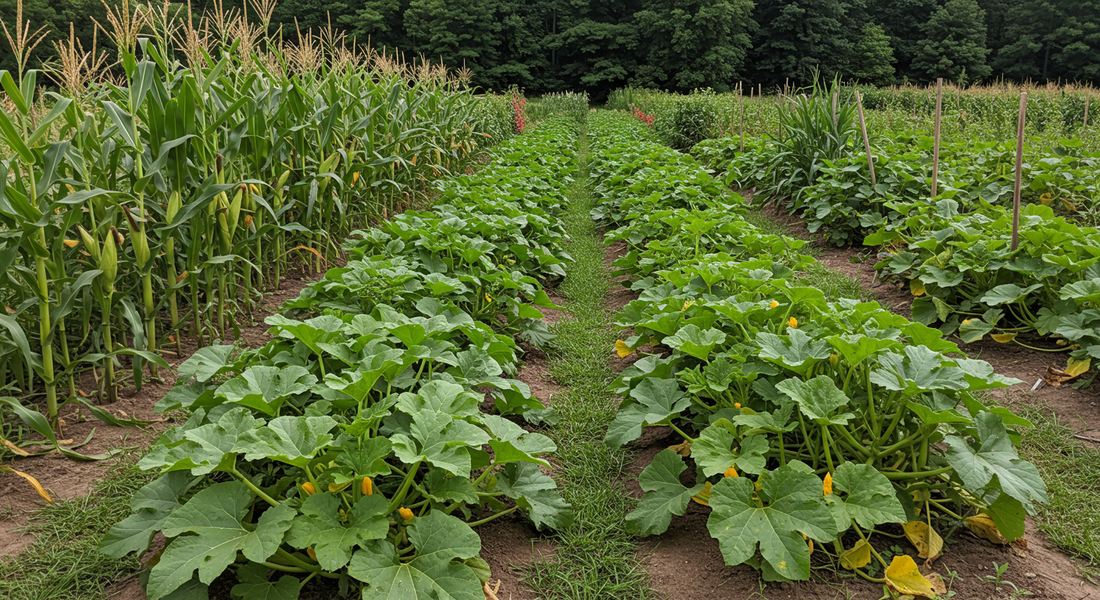
How to Start a High-Yield Survival Garden
Share
In any long-term self-sufficiency plan, stored food is a finite resource. A survival garden, however, is the ultimate source of renewable food, a living pantry that can sustain you and your family when supply chains are disrupted.
But gardening for self-sufficiency requires a shift in mindset. This isn't about growing the most exotic tomatoes or delicate lettuces; it's about a strategic focus on calories, nutrition, and storability. This guide covers the survival garden basics to help you turn a patch of soil into a source of security.
Planning Your Survival Garden
Success starts long before you plant the first seed. Thoughtful planning is critical for creating a high-yield vegetable garden.
-
Choose a Sunny, Secure Location: Most vegetables need at least 6-8 hours of direct sunlight per day. Observe your property throughout the day to find the sunniest spot. Also, consider security—you want a location that is relatively discreet and protected from both animal pests and prying eyes.
-
Raised Beds vs. In-Ground: Raised beds offer excellent drainage, warm up faster in the spring, and allow you to control your soil mix completely. They are a great option for beginners or those with poor native soil. Traditional in-ground gardens can be more labor-intensive to set up but are more cost-effective for larger plots and retain moisture better during dry spells.
-
The Importance of Healthy Soil: Your harvest will only be as good as your soil. Rich, well-draining soil full of organic matter is the foundation of a productive garden. It's wise to get a soil test to understand your soil's pH and nutrient composition, allowing you to amend it effectively with compost and other organic materials.
Top 5 High-Calorie, Easy-to-Grow Survival Crops
When planning your garden, prioritize crops that provide the most calories and nutrients for the space they occupy. Here are some of the best survival garden seeds to invest in:
-
Potatoes and Sweet Potatoes: Calorie-dense and incredibly easy to grow, potatoes are a top-tier survival crop. They store well for months in a cool, dark place. Sweet potatoes offer similar benefits with a high nutritional value.
-
Corn: A staple for centuries, corn is a fantastic source of carbohydrates. It can be eaten fresh, dried for long-term storage to be ground into cornmeal, or saved as seed.
-
Beans (Bush and Pole): Beans are a protein powerhouse. Pole beans are excellent for small spaces as they grow vertically, while bush beans are easy to manage. Both can be eaten fresh or, more importantly, dried on the vine for a long-lasting source of protein.
-
Squash (Winter Varieties): Varieties like butternut, acorn, and spaghetti squash have thick skins that allow them to be stored for months without refrigeration, providing valuable calories and nutrients deep into the winter.
-
Sunflowers: Often overlooked, sunflowers are a dual-purpose crop. The seeds are a high-fat, high-calorie snack, and they can also be pressed to produce valuable cooking oil.

Essential Gardening Techniques
Growing food is a skill that improves with practice. Mastering these fundamental techniques will ensure your garden remains productive season after season.
-
Composting and Soil Amendment: Create a compost pile to turn kitchen scraps and yard waste into "black gold." Regularly adding compost to your garden beds enriches the soil, improves its structure, and provides essential nutrients to your plants, reducing the need for chemical fertilizers.
-
Natural Pest Control: A survival garden should be resilient. Use natural methods like companion planting (planting marigolds to deter pests), introducing beneficial insects like ladybugs, and using physical barriers like row covers to protect your crops without relying on chemical pesticides.
-
Seed Saving: The ultimate step in self-sufficiency is saving your own seeds. Learn to harvest, dry, and store seeds from your strongest, healthiest plants. This creates a free and continuous supply of seeds adapted to your specific climate and growing conditions.

Conclusion: A Step Toward Resilience
Integrating a high-yield vegetable garden into your overall preparedness plan is one of the most empowering steps you can take. It connects you to your food source, provides superior nutrition, and builds a foundation of true self-reliance. Don't be intimidated by the scale of the task.
